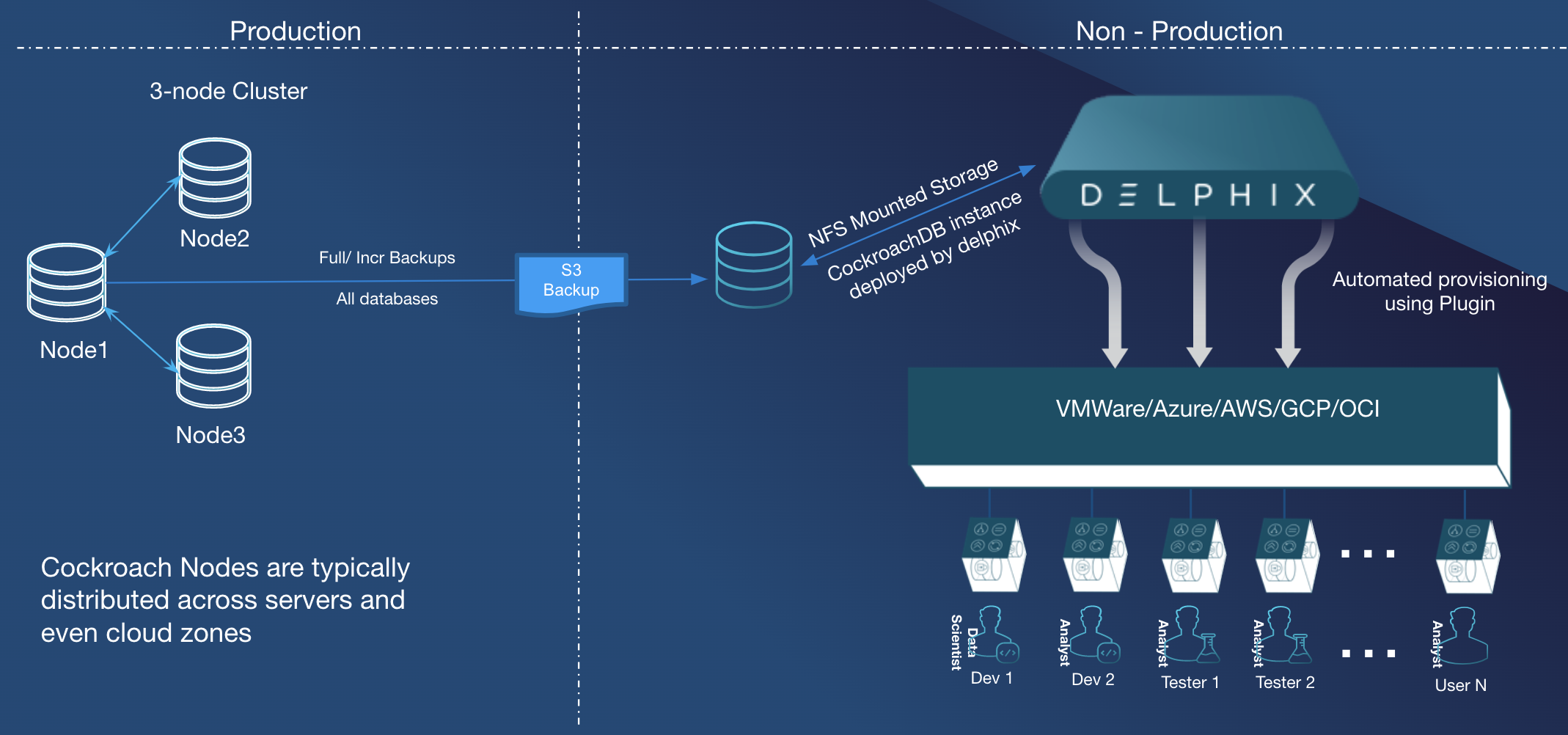CockroachDB Architecture
Overview
Various CockroachDB configurations ranging from CockroachDB dedicated and self-hosted deployments can be used with Delphix. This article contains an overview of how Delphix works with different CockroachDB deployments.
There are three key concepts when using Delphix with any data platform:
-
Environments: The server and software required to run a data set. For CockroachDB, this will be an operating system host with CockroachDB cluster running on it.
- Staging Environment: Source data is ingested into Delphix using Staging Host. These will be used to create dSources.
- Target Environment: Target hosts to provision VDBs. These environment need CockroachDB installations that correspond to the versions of the Source environments, per our CockroachDB Support Matrix
-
dSources: A database that the Delphix Virtualization Engine uses to create and update virtual copies of your database. A dSource is a virtualized representation of a physical or logical source database, which cannot be accessed or manipulated using database tools.
-
VDBs: A database provisioned from either a dSource or another VDB which is a copy of the source data. Once a VDB has been provisioned to a target environment, you can also create a snapshot policy for that VDB, to capture changes within it as if it were any other logical or physical database.
Environment Linking and Provisioning Architecture
As shown in the diagram below Delphix begins by ingesting data from your source database backups to create dSources. Data is ingested using existing backups on Disk or AWS S3. Once you have added an environment, Delphix will automatically discover CockroachDB Cluster setup on them. This means we are looking for any compatible data sources we could ingest from to create new dSources.
